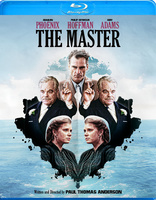The Master Blu-ray Movie
HomeThe Master Blu-ray Movie 
Blu-ray + DVD + Digital CopyStarz / Anchor Bay | 2012 | 138 min | Rated R | Feb 26, 2013
Movie rating
7.7 | / 10 |
Blu-ray rating
| Users | 4.2 | |
| Reviewer | 4.5 | |
| Overall | 4.2 |
Overview
The Master (2012)
Paul Thomas Anderson writes and directs this Academy Award-nominated drama about a US Navy veteran suffering from post-traumatic stress disorder who seeks salvation in the company of a charismatic cult leader. Joaquin Phoenix stars as Freddie Quell, a troubled drifter who arrives home to post-WWII America shaken, disillusioned and fearful of the future. A raging alcoholic, Quell cannot begin to make sense of his deeply-rooted inner torment, let alone surmount it. When he meets Lancaster Dodd (Philip Seymour Hoffman), the 'master' of a cult called The Cause, an intense and ambiguous relationship develops between the two men. But do Dodd's teachings hold the power to turn Quell's life around?
Starring: Joaquin Phoenix, Price Carson, Philip Seymour Hoffman, Amy Adams, Laura DernDirector: Paul Thomas Anderson
| Drama | 100% |
| Period | 31% |
Specifications
Video
Video codec: MPEG-4 AVC
Video resolution: 1080p
Aspect ratio: 1.85:1
Original aspect ratio: 1.85:1
Audio
English: DTS-HD Master Audio 5.1 (48kHz, 24-bit)
Subtitles
English SDH, Spanish
Discs
50GB Blu-ray Disc
Two-disc set (1 BD, 1 DVD)
Digital copy (as download)
DVD copy
Playback
Region A (locked)
Review
Rating summary
| Movie | 5.0 | |
| Video | 5.0 | |
| Audio | 4.0 | |
| Extras | 2.5 | |
| Overall | 4.5 |
The Master Blu-ray Movie Review
Cause and Effect
Reviewed by Michael Reuben February 5, 2013Paul Thomas Anderson's latest film, The Master, arrives on Blu-ray bearing three Oscar nominations and a shelf of critics' awards, but it's just as likely to divide viewers as Magnolia (1999), the most controversial of Anderson's previous works. Though lacking the earlier film's punishing length and dense plot, The Master demands just as much effort from viewers—maybe more. On the surface, The Master tells a simple story of two outsiders who share a mysterious connection, but the story always seems to be moving sideways, with neither of the main characters ever coming into clear focus. The more we learn about each of them, the more elusive they become. By the end of the film, one would be hard-pressed to say that either man has completed what, in movie parlance, would be called a character's "journey", and yet one senses intuitively that something has happened. You walk out of the theater (or media room) searching for words to describe just what that something is. Anderson has been pushing the narrative boundaries of conventional filmmaking for a long time now, experimenting with how stories can be told, even questioning the very nature of what a cinematic story can be. Boogie Nights and Magnolia fractured traditional dramatic structure into a series of interconnected mini-dramas. Punch-Drunk Love attempted to reinvent romantic comedy by flipping every traditional element upside down (including using Adam Sandler's familiar man-child as the romantic lead). There Will Be Blood appeared to tell a story of the early days of oil drilling but gradually revealed itself to be about a soul's damnation, as foreshadowed in the title and the multiple meanings of the film's final line ("I'm finished"). The Master is Anderson's boldest experiment yet with narrative form, because it kicks away much of the familiar scaffolding we use to keep our footing in a story, while at the same time commanding our attention with entrancing images, hypnotic sound and enthralling performances. Themes, connections and emotions multiply on subsequent viewings. The Master is a film that will be slowly discovered and assimilated over time. I've seen it twice, and I already want to see it again. But it only takes one viewing to recognize that Anderson has created something remarkable.
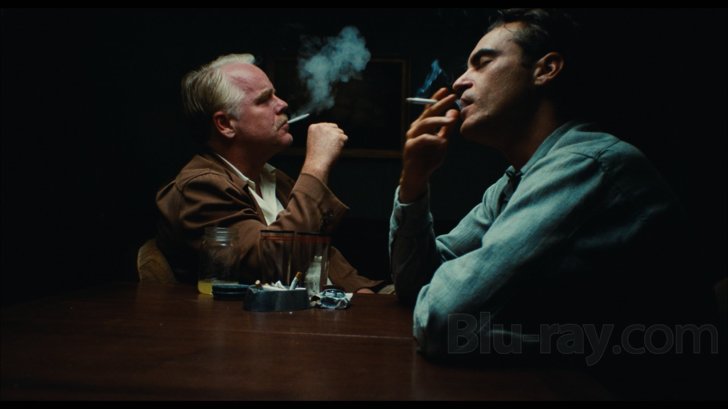
The central character of The Master is a World War II Navy veteran named Freddie Quell (Joaquin Phoenix), who may or may not be suffering from shell shock, or what we now call "PTSD", after fighting on the Pacific front. We see Freddie receiving treatment in a military hospital, along with other veterans, but as details of his life before the war emerge during the course of the film, it becomes evident that Freddie was already badly damaged before he joined the Navy. It's possible, even likely, that the war simply enlarged the fractures that life had already cracked into his character. What we quickly learn about Freddie is that he drinks indiscriminately, including home brews made with petroleum products; is obsessed with sex; and has what would today be called anger management issues that make him prone to sudden violent outbursts and physical confrontations. After the war, he's unable to hold down a steady job. One night, while working as a field hand on a Northern California farm, Freddie flees an altercation with fellow workers and, by chance hops onto a yacht departing San Francisco Bay. The temporary captain is Lancaster Dodd (Philip Seymour Hoffman), a charismatic and evasive purveyor of a therapy-cum-philosophy dubbed "The Cause". Freddie initially laughs at Dodd's pronouncements, as he laughs at most things that make him uncomfortable, but he is gradually drawn into Dodd's world on the long voyage to New York City, the home of the yacht's owner, a wealthy society lady who supports Dodd. As Freddie accompanies Dodd on his travels promoting and developing The Cause, the two men strike up a unique relationship that, at first, Dodd's fiercely protective wife, Peggy (Amy Adams), finds encouraging. After their first meeting, she tells Freddie that he's inspired Dodd, but before long she's become distrustful of Freddie's drinking, for which her husband shares a taste, and of his sexual proclivities, which Peggy somehow seems to sense and, with the unerring instinct of a long-time spouse, identifies in her husband as well. In one of the film's many surreal sequences, Freddie watches Dodd sing to a group of his followers, and in Freddie's imagination, every woman in the group becomes a sex object (I'm being deliberately vague for those who have not yet seen the film). But in the next scene, Peggy punishes Dodd for Freddie's thoughts, as if she knew exactly what was in his mind and blamed her husband for sharing it (or perhaps inciting it). Even though The Master depicts much of Dodd's home-baked philosophy and contains many scenes of his treatment method known as "processing", the film isn't really about The Cause (which Anderson avowedly modeled on Scientology). Nor is it about Freddie's voyage of self-discovery, because Freddie has no desire to know himself. Rather, the film is about the mysterious, charged connection between these two men that neither of them can quite explain, but that keeps yanking them back into each other's orbit. Throughout the film, Dodd repeatedly tells Freddie he's sure they've met. At first, it seems like a harmless trick to establish rapport, but when Dodd eventually "remembers" their meeting, you're not sure what to make of it. By then, there have been so many cues—thematic, verbal, visual—establishing Freddie and Dodd as kindred spirits that they could almost be aspects of the same person. When they first meet, Freddie asks Dodd what he does, but Dodd answers a different question. He says what he is. After listing a number of occupations, he says: "But above all, I am a man, a hopelessly inquisitive man. Just like you." Even if one treats this as merely a con man's patter, their positions are almost immediately reversed, when Dodd reveals his affinity for Freddie's home brew and asks what's in it. "Secrets", says Freddie, with a grin, perhaps sensing that no other answer is better calculated to intrigue Dodd. Now it's Freddie who's conning Dodd, since his rot gut is nothing more than a mixture of whatever whiskeys are available, plus paint thinner. Dodd wants more, and Freddie is only too happy to oblige, because it guarantees him food and lodging. Who's conning whom? And so things go, as Freddie moves in Dodd's world but retains his outsider's perspective. He does Dodd's exercises, but takes them no more seriously than the VA's Rorshack tests. At some level, he knows, like Dodd's son, Val (Jesse Plemons), that Dodd is making it up as he goes along, but he doesn't care. When Dodd is criticized by a skeptic, John More (Christopher Evan Welch), or his latest book is dismissed as nonsense by his publisher (Kevin Anderson), or Dodd is arrested on a warrant sworn out by a wealthy contributor who has had second thoughts, Freddie leaps to his defense, violently so. Freddie may be skeptical of Dodd, but he won't tolerate disloyalty in anyone else. Nothing angers him quicker. In this, too, he is matched by Dodd, whose temper is equally intense, though somewhat better controlled, when he is challenged by anyone—including Freddie. In a remarkable scene midway through the film, the two men are placed in adjoining jail cells, Dodd on the warrant and Freddie for interfering with the police. Freddie arrives already at gale force from battling the officers who subdued him, and it takes Dodd a while to rev up to his level. But Freddie keeps provoking him, and eventually the two men are standing on opposite sides of their prison bars, face to face, yelling at each other at full volume. What has become of The Cause now? Anderson has always been deliberate in his choices of words, and it can't be an accident that he gave Dodd's organization an ambiguous name that can refer to a movement or a crusade but also to a basis, source or origin. Dodd's processing is intended to identify the "cause" of people's present-day problems in past experiences and "free" them from the hold of the past. More than anyone else, it is Freddie who challenges Dodd's method by stubbornly refusing to be molded by Dodd's processing. Even after he has revisited his past traumas, Freddie remains who and what he is, which is no doubt why Dodd finds it so hard to let Freddie go. Though they are separated at the end of the film (obviously at Peggy's insistence), can one really be certain that the separation is permanent? Freddie once walked away from Dodd, and all it took was a phone call to bring them back together. Who can say when circumstances may once again cause the negative and the positive to collide (to borrow one of Dodd's facile phrases)?
The Master Blu-ray Movie, Video Quality 
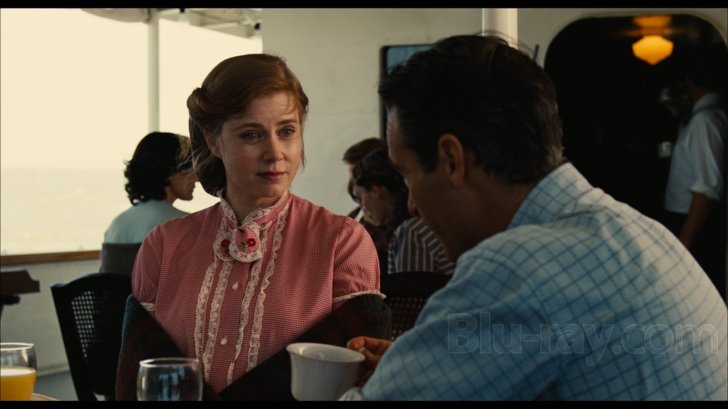
As has been widely publicized, The Master was the first fiction film to be shot in 65mm since Kenneth Branagh's Hamlet in 1996 (although hand-held sequences, about 15% of the film, were shot in 35mm). The DP was Mihai Malaimare Jr., the Romanian cinematographer best known for shooting Tetro and Youth Without Youth for Francis Coppola. (Anderson's usual collaborator, Robert Elswit, was unavailable due to other commitments.) Unlike most contemporary releases, post-production work was completed photochemically, without the use of a digital intermediate. The existing Blu-ray format may not have sufficient resolution to convey the full image detail of a 65mm negative. (DP Malaimare estimates that 8K resolution would be required.) Nevertheless, the image on Anchor Bay's 1080p, AVC-encoded Blu-ray is nothing short of stunning, with density, detail, sharpness and sheer presence against which any Blu-ray I have seen to date can favorably compare. Colors range from the cool (intensely cool) blues of the Pacific locales where Freddie Quell serves as a sailor to the warm and just-too-saturated palette of the New York party where Dodd is the guest of honor and the Philadelphia home where he takes up residence. The film's visual design, and indeed the use of a large-format negative, had its inspiration in portrait photography (one of Freddie's many jobs), and scene after scene harkens back to this initial concept, with the camera locked down for an extended take, allowing the viewer to soak up the detail within the frame and be drawn into the scene. If you look very closely, you can discern the film's grain pattern, but the photography is so sharp and the post-processing has been so carefully monitored that the grain is almost imperceptible. Certainly, having taken so much trouble to get the image just right prior to release, the filmmakers have been careful not to allow any digital tampering for the Blu-ray, and the compressionist did not add to their challenges.
The Master Blu-ray Movie, Audio Quality 

Radiohead's Jonny Greenwood provided the distinctive score for The Master, having previously scored There Will Be Blood. Greenwood's compositions are as essential to the sonic landscape of The Master as the film's dialogue, hovering between music and sound effects and providing a kind of non-verbal commentary on Freddie Quell's interior world. The Blu-ray's DTS-HD MA 5.1 track reproduces Greenwood's score with a forceful presence that takes full advantage of the surround array. Seamlessly integrated with the original score are period-specific tunes like "Don't Sit Under the Apple Tree (with Anyone Else but Me)", which sound wonderful. Major effects such as the ocean or the interior of a naval vessel are noteworthy, but in general The Master's mix goes for subtle environmental ambiance that doesn't draw attention away from the visuals. Dialogue is always clear, and the occasional sudden explosion of sound (usually associated with Freddie's temper) registers with appropriate impact.
The Master Blu-ray Movie, Special Features and Extras 
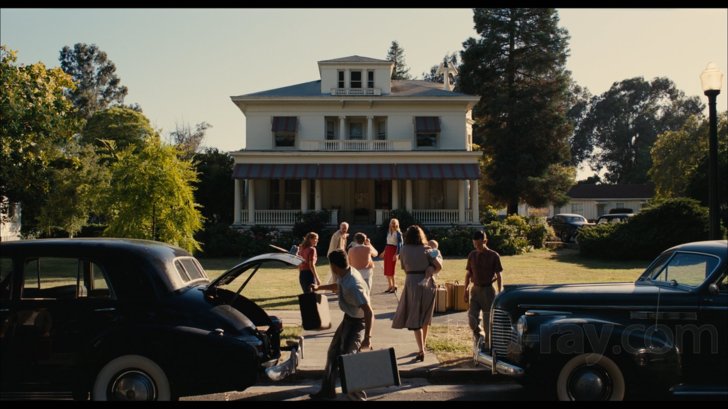
Unfortunately, Anchor Bay's Blu-rays of films released by the Weinstein Company continue to be mastered with BD-Java, while omitting the essential convenience of bookmarking. There is no excuse for this continued omission of basic user-friendliness (especially with a mere eight chapter divisions).
- "Back Beyond": Outtakes, Additional Scenes; Music by Johnny Greenwood (1080p; 1.85:1; 19:59): Rather than the usual itemized listing, this collection of deleted scenes has been edited together in the form of a short film, with a separate musical soundtrack (in DD 2.0) and voiceover that has sometimes been lifted from one scene to accompany another. It's a fascinating exercise in alternative presentation and opens an interesting window into the editing process.
- Teasers/Trailers (1080p; 1.85:1; 16:56): There are nine, of various lengths and with different focuses.
- "Unguided Message": 8 Minute Short; Behind the Scenes (480i; 1.85:1, non-enhanced; 7:59): Unnarrated footage from various sets and locations provides a brief overview of the film's production.
- "Let There Be Light" (1946): John Huston's landmark documentary about WWII veterans (480i; 1.33:1; 58:06): Anderson has said that he drew substantially from this documentary covering treatment of what is now known as "PTSD". The bulk of the film records sessions of hypno-therapy that tend to support the assertion made by John More in The Master, namely that Lancaster Dodds's "processing" differs little from hypnosis. The source material for "Let There Be Light" appears to be public domain, and it contains a few sound dropouts.
The Master Blu-ray Movie, Overall Score and Recommendation 
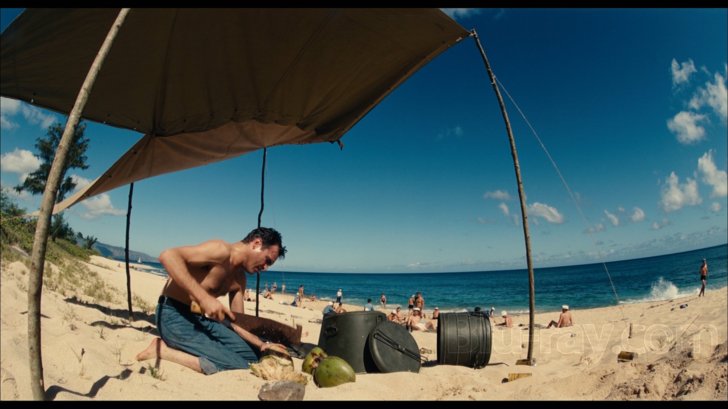
A recurrent theme throughout Anderson's work is the degree to which the past shapes our present, or how (in Faulkner's famous phrase): "The past isn't dead. It isn't even past." Before The Master, the theme was perhaps most starkly portrayed in Magnolia, in which the consequences of past events kept erupting throughout a single day in the lives of multiple characters connected to a TV quiz show with the suggestive name "What Kids Know". But where Magnolia focused specifically on parent/child relations, The Master expands the inquiry to the very essence of personhood, consciousness and identity. It achieves its effect not through the pseudo-scientific patter of Dodd or the inarticulate fumblings of Freddie Quell's discontent, but through the strange energy, sometimes electric, sometimes hypnotic, they generate in proximity to each other. Highly recommended.
Similar titles
Similar titles you might also like

The Irishman
2019

Phantom Thread 4K
First pressing in clear case
2017

At Eternity's Gate
2018

Melancholia
2011

First Reformed
2017

Rust and Bone
De rouille et d'os
2012

The Last Black Man in San Francisco
2019

Wonder Wheel
2017

A Dangerous Method
2011

American Pastoral
2016

Moonlight 4K
2016

The Deer Hunter
1978

Beanpole
Дылда / Dylda
2019

There Will Be Blood
2007

The Tree of Life
2011

Ingrid Goes West
2017

Sophie's Choice
Collector's Edition
1982

The Deep Blue Sea
2011

The Men
Battle Stripe
1950

Brideshead Revisited
30th Anniversary Edition
1981
